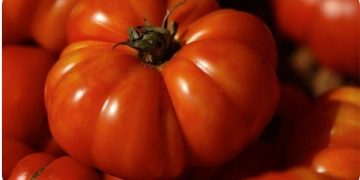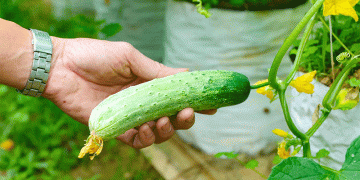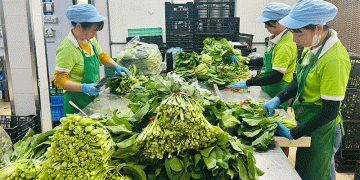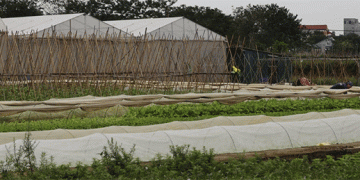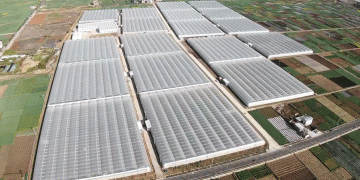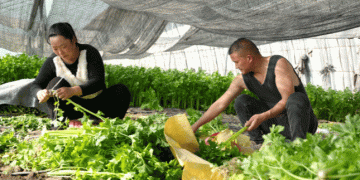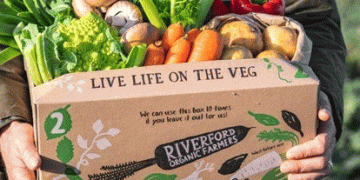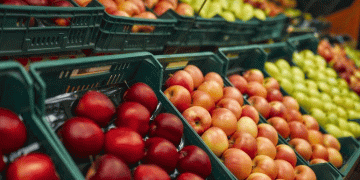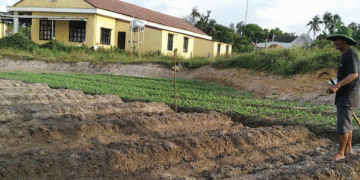A Guide for Growing Heirloom Vegetables
Heirloom vegetables are always open-pollinated and this means they are pollinated by insects or wind without the help of humans. They can be some of the finest vegetables ever known. Collect heirloom seeds simply because of the unique color or size of a certain vegetable or produce. To qualify as an heirloom, seeds are extracted and then preserved from the plants of a particular crop each year for at least 50 years. The plant has been kept separate and apart from other like plants to ensure pollination only within the population. The process of pollination occurs with natural mechanisms like wind, birds, or insects. This type of pollination is known as open pollination. Heirloom vegetable seeds are harvested only from open-pollinated plants.
Heirloom vegetables are defined in many ways. Many gardeners grow heirloom vegetables that have superior flavor. These vegetables have been selected for taste through several generations is tastier than cultivars that have been selected for ease of shipping.
A Guide to Growing Heirloom Vegetables, Tips, Ideas, Techniques, and Secrets
The Difference between Heirloom and Hybrid Vegetables
Growing heirloom vegetables means that the seeds from these are open-pollinated; so, a characteristic of each particular cultivar is passed on exactly from year to year. Heirloom vegetables are the traditional varieties grown for their desirable traits for millennia.
Hybrid vegetable seeds are created by crossing 2 selected varieties, sometimes resulting in vigorous plants that yield more than heirloom plants. The hybrid seed is that it is composed of two or more cultivars to create a new variable containing chosen traits from all and can be cross-pollinated. Hybrid vegetable seeds are the first generation offspring of two distant and distinct parental lines of the same species.
Are Heirlooms The Better Choice?
Heirloom vegetables have better flavor, hardier, and have more flexibility compared to hybrid varieties. Plant breeders cannot manipulate complex characteristics such as flavor as easily as they can size and shape.
Heirloom seeds are dynamic and adapt to the local ecosystem. They are essential to continue traditional breeding methods to develop crops that can adapt to a changing climate.
Benefits of Heirloom Vegetables
The benefits of growing heirloom vegetables have superior flavor, color, size, and production. Some heirloom plant varieties can be traced back hundreds of years. Heirloom plants have been passed down through not only the family tree but via whole groups of people who recognize their positive characters and choose to save seeds from the best tasting. One of the greatest benefits of heirloom vegetables is in maintaining the diverse genetic base represented so as not to lose these crucial traits.
Firstly, heirlooms are known to produce better taste and flavor. Heirloom vegetables are more nutritious compared to hybrid varieties. The advantage of growing heirloom seeds is the ability that you have to save the seeds year after year and seeds that are preserved properly will produce the same plant each time they are planted. Vegetable seeds that are used today have to be purchased every spring and this alone makes heirloom seeds unique and desirable. For those striving to be truly self-sufficient, heirloom and other open pollinating vegetable seeds are a must-have. Commercial growers have been steadily pushing for higher crop yields.
When breeders create varieties for commercial farming, they have to select for traits that make the produce shelf-stable and uniform. Also, it is important to have products that ripen at the same time so growers can harvest during a short period. Unfortunately, when you select for thick skin, durability, high yield, and short harvest periods, you lose some of the qualities that make vegetables more nutritious. Another byproduct of breeding for shelf stability is the loss of flavour. The flavor depends mainly on the correct growing conditions, healthy soil, and the proper harvest time.
Most commercial crops are grown in the correct climate conditions, but the soil is depleted and artificially fertilized. While the produce is harvested a few weeks before the crop is ready to preserve shelf life, which doesn’t allow for the natural ripening method of increasing sugar content. Many commercial hybrids would be flavorful if they were grown by local growers because they would have healthier growing conditions.
Why Use Heirloom Vegetable Seeds?
Heirloom vegetable seeds are chosen by today’s gardeners for an assortment of reasons. Gardeners who use heirloom vegetable seeds appreciate the rich flavor and high nutritional content of the produce. Unusual shapes, beautiful colors, and extraordinary size add to the enthusiasm over heirloom seed use.
High-quality heirloom seeds have verifiable documentation of the seeds’ generational history. Then, to carry on the tradition through gardening evokes a sense of charm and satisfaction. The ability to contribute to sustaining certain varieties of vegetable plants is appealing for some heirloom seed gardeners. Agricultural biodiversity and genetic diversity are achieved with open-pollinated gardening, and heirloom seed growth supports this goal.
For most heirloom gardeners though, there are mainly two main purposes for saving heirloom seeds which encompass most of the other reasons. The first is to preserve them as a true heirloom variety and the second is to adopt an heirloom variety to their gardens. To preserve an heirloom vegetable variety from seed and the goal is to achieve a predictable plant year after year. To accomplish this, heirlooms varieties should be allowed to open pollinate. If cross-pollination occurs, the variety that you set out to preserve will change and then allow heirloom plants plenty of elbow room away from other plants of the same variety.
You will need to find the requirements of the heirloom plants you are growing from seed. Be certain you are providing the proper support to encourage strong healthy vegetable plants. Weak plants will not produce strong seeds.
Make sure to grow a large number of plants and some seed savers harvest up to two-thirds of a crop for seed and keep that in mind when you are planting. For some vegetables such as beans, a large percentage of your harvest will be for seed rather than for eating. There are many reasons for growing heirloom vegetables. They are stable, often suited to your local region, and tasty.
Taste – In their attempts at breeding hybrid vegetable seeds to develop certain traits, much of the taste of vegetables have been lost and this is not the case with heirloom seeds. Farmers who used heirloom vegetable seeds didn’t worry about transporting the vegetables. They were grown locally for taste.
Stability – Heirloom vegetable seeds tend to remain stable in their characteristics compared to hybrids from one year to the next year. Many heirloom vegetable plants are resistant to local disease and insects.
Nutrition – Hybrid vegetables are grown to have a higher yield to the crop. This can lead to a lower nutritional value for each plant. Home gardeners don’t worry so much about the crop yield, so the extra nutritional value of heirloom vegetables gives more yields.
Expense many heirloom seeds are less expensive to purchase on seed racks. Even better, you can save the seeds from the vegetables you get; your cost will go down to zero.
Hardiness – Many heirloom vegetables will end up being perfectly suited to a particular garden. Select vegetable seeds from local farmers and you will be sure to plant those that do well in your locality.
Seed Saving – Heirloom vegetables are open-pollinated by wind and bees. That means you can save the seeds to plant from one year to the next and will get the same quality of vegetables.
Growing Heirloom Vegetables from Seed
Growing heirloom vegetables from seed are just like growing any other vegetable plant from seed. The plants don’t need any extra special care or attention. But you will, want to make sure you’re starting with heirloom seeds to get true heirloom vegetables.
When choosing heirloom vegetable seeds, the first thing you want to look for on the seed packet is the term “heirloom”, it is also called OP – “open-pollinated.”
Open-pollinated vegetables are pure and you can therefore save seeds from them (so long as they’re a self-pollinating type of vegetables like Tomatoes, Beans, and Peas, etc. For example, Pumpkins and Squash, will cross-pollinate with other varieties, which makes them more difficult, but not impossible to save seeds from).
While open-pollinated seeds aren’t necessarily heirlooms (because they could not have a traceable lineage that goes back several generations the same way as heirlooms do), they are purebreds that you can easily become heirlooms because you can save seeds from them.
Saving Heirloom Vegetable Seeds
If you grow heirloom vegetable plants, you will almost certainly save seed. Many people also feel that saving their seed gives them more connection to the entire process of growth and regeneration.
Some vegetable crops are mainly self-pollinating; their seeds will produce plants like the parent plant that produced the seeds. Beans, Peas and Peanuts, Lettuce, Eggplant, Peppers, and Tomatoes are self-pollinating. Beans and tomato crops are popular as heirloom vegetables because they are easily maintained true to type. Vegetable crops that are cross-pollinated by wind or by insects need to be isolated at a considerable distance from other plant varieties. This distance could need to be several hundred yards or more, depending on the crop. Some vegetables like Onions, Cucumbers, Corn, Pumpkins, Squash, Broccoli, Beets, Carrots, Cabbage, Cauliflower, Melons, Radishes, Spinach, Swiss chard, and Turnips are all insect-or wind-pollinated. If your goal in starting an heirloom vegetable is to preserve it, you do not want it to cross with something else.
Select plants to save seed from before you harvest the rest of the crop to eat. You must choose the healthiest, most productive, and most flavorful plants to save for seed. Label them clearly for seed to avoid temptation and then allow seeds to ripen fully before they are harvested. Strong and healthy plants produce healthier seeds than seeds from weak, stressed plants.
A warm, dry condition while seed matures increases their storage life. It is best to harvest seeds and bring them inside for final drying as soon as they are fully mature and dry.
Most vegetable seeds remain viable for 3 to 5 years when stored properly. Place thoroughly dry seed in a tightly closed glass jar and then keep the jar in a cool dry location. Put silica gel packets in with the seed to help keep it dry and add diatomaceous earth to the seed to help prevent insect damage. Store seed in the refrigerator to increase its life expectancy. To test for germination, sprout seeds between moist paper towels; if the germination process is low, either discard the seeds or plant extra to give the desired number of plants.
- Long-lived vegetable seeds include beets; all cabbage relatives like Broccoli, Cauliflower, Collards, And Kale; Cucumber; Lettuce; Melons; Peppers; Sunflower; Tomato; and Turnip. If you keep them cool and dry, these seeds should maintain good viability for 5 years or more.
- Medium-lived vegetable seeds include Beans, Carrot, Chard, Eggplant, Parsley, Peas, Pumpkin, and Squash. These, properly stored, should last at least 3 years.
- Short-lived vegetable seeds can only be depended on to last to the next growing season. These short-lived vegetables include Corn, Leek, Onion, and Spinach seed.
Tips for Growing Heirloom Vegetable Plants
Firstly, when attempting to grow heirloom vegetables, don’t save seed from hybrids as they won’t produce the same plant as that of the parent plant. Vegetable plants which are mostly self-pollinators like Beans, Peas, Peanuts, Eggplants, Tomatoes, Peppers, and Lettuces are great choices for saving heirloom vegetable seeds as they will duplicate the qualities of the parent plant. Insects will on occasion pollinate these varieties of heirloom plants; they must be planted at least 10 feet apart. Insect or wind-pollinated heirloom vegetables must be planted several hundred yards or so from other varieties, to prevent cross-pollination. These include Squash, Broccoli, Beets, Pumpkins, Corn, Onions, Cucumbers, Carrots, Cabbage, Cauliflower, Melons, Radishes, Spinach, Swiss chard, and Turnips.
To completely preserve the heirloom vegetable quality, it’s best, especially for the small home gardener, to plant only one variety of species at any one time to prevent cross-over. Select the healthiest and tastiest plants to save seed from before harvesting the entire crop. Then, allow seeds to ripen before harvesting, as they are more likely to produce healthier plants. After that, bring the seeds indoors to continue to dry. Label them clearly with the date and variety. A 3 to 5 years shelf life is ideal for most dry seeds stored in a sealed glass jar in a cool, dry area. Though silica gel packs will aid in keeping the seeds dry and diatomaceous earth can be added to deter insects.
Start with Easy-to-Grow Heirloom Vegetables
1. Beets
Both the greens and roots are edible and do well in fairly hot or cold weather conditions.
Heirloom bean varieties to try planting: Kentucky Wonder Pole, Turkey Craw, Rattlesnake Pole, Cherokee Long Greasy, Fin de Bagnols, Detroit Dark Red, Lutz Salad Leaf, Blood Turnip, and Crosby’s Egyptian
2. Beans
‘Cherokee Trail of Tears’ variety is an heirloom pole bean that was carried by the Cherokee Indians along the Trail of Tears. It has a purple color striped pod with shiny black seeds.
‘Jacob’s Cattle’ is a small and pretty bean that is pure-white with deep maroon splashes. It is good for soups and stews.
‘Rattlesnake Pole’ bean variety has purple-streaked, 7-inch green pods that curl like a snake. The seeds are buff-colored with black color stripes.
‘Greasy Cut short Pole’ has plant leaves that are shiny, giving a greasy appearance. Good eaten like snap beans.
‘Purple Pod Pole’ variety was discovered in the Ozark Mountains by Henry Fields in the 1930s. They grow about 6 feet tall with tender and round 5-7 inch string-less pods. They turn green when cooked.
‘Tongues of Fire’ bean variety is an early snap bean with beige and brown markings. Excellent flavor.
Heirloom Bean Varieties – Beans, Lima and Runner Beans
- ‘Blue Coco’ Bean
- ‘Brown Lazy Wife’ Bean
- ‘Beurre de Rocquencourt’ Bean
- ‘Caseknife’ Bean
- ‘Egg’ Bean or ‘All-in-One’ Bean
- ‘Hickman Snap’ Bean
- ‘Ice’ Bean or ‘Crystal White Wax’ Bean
- ‘Indiana Wild Goose’ Bean
3. Potatoes
An heirloom potato is grown consistently year after year for decades or longer, maintaining its original characteristic tubers. Like another kind of heirloom vegetables, old potatoes have been preserved through the years by small-scale farmers and home gardeners who appreciate their sometimes subtle differences in size, shape, and cooking qualities. Some of the heirloom potato varieties are given below;
- ‘Russian Banana’ is a fingerling potato with yellow color flesh and a waxy texture.
- ‘Yellow Finns’ is medium-sized with yellow color skin
- ‘Bliss’ Triumph’ Potato
- ‘Champion’ or ‘Vermont Champion’ Potato
- ‘Early Ohio’ Potato
- ‘Early Rose’ Potato
- ‘Garnet Chile’ Potato
- ‘Green Mountain’ Potato
- ‘Irish Cobbler’ Potato
- ‘Peach Blow’ Potato
4. Corn
- ‘Golden Bantam’ was first introduced in 1902 and this is the corn to which all others were compared.
- ‘Stowell’s Evergreen’ variety is the standard, late-season white sweet corn before ‘Silver Queen’ was developed.
- ‘Bloody Butcher’ corn is a bright red variety that is used in making flour.
- ‘Strawberry Popcorn’ is an old corn variety with small ears that can be used as a decoration and popcorn.
5. Squash
Heirloom Squash Seeds are one of the quick-growing crops you can grow. These terms loosely refer to when the squash crops are harvested, and accurately group the squash by the durability of the rind.
‘Cushaw Green-Striped’ squash variety produces good-sized, white fruits with green stripes and long, curved necks. It is good for pies and baking. Squash plants are drought tolerant and the fruit stores well.
6. Cucumbers
Cucumbers tend to be easy and mature a lot quicker than melons.
Some heirloom cucumber varieties are Boothby’s Blonde, Parisian Pickling, White Wonder, lemon cucumber, and Poona Kheera
‘Lemon’ produces many lemon-colored and lemon-shaped fruit.
‘White Wonder’ matures to an ivory white color.
For seed-saving purposes, cucumbers must be left on the vines until they ripen, when they turn bright yellow or orange.
Heirloom Cucumber Varieties are;
- ‘Boothby’s Blond’ Cucumber
- ‘Cornichon vert petit de Paris’
- ‘Crystal Apple White Spine’ Cucumber
- ‘Early Frame’ Cucumber
- ‘Jersey Pickling’ Cucumber
- ‘Lemon’ Cucumber
- ‘West India Burr Gherkin’
- ‘White’ Cucumber
7. Tomatoes
You may also check this: How To Grow Organic Thyme.
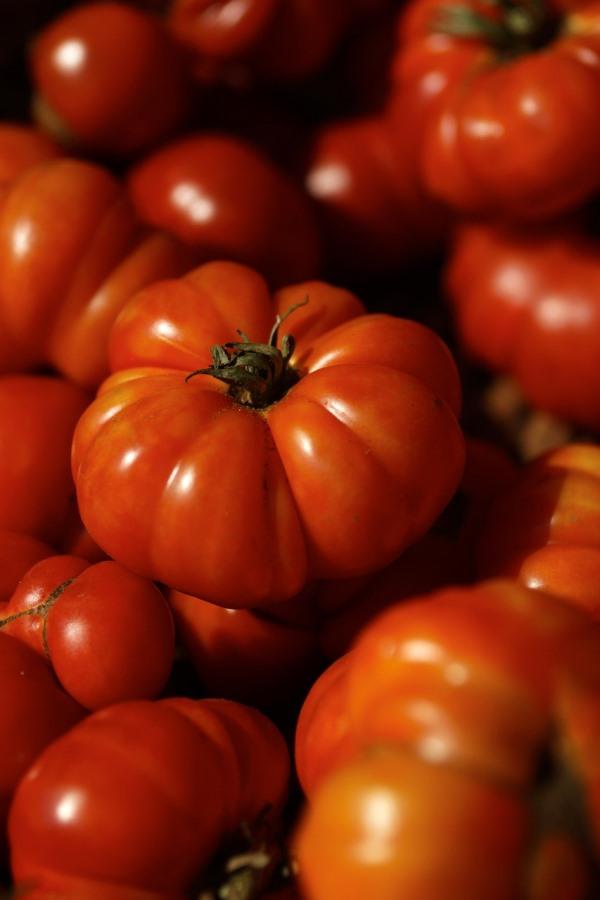
They are so popular that even if you’re a new gardener, we suggest you try growing them.
Some heirloom tomato varieties to try planting are Cherokee Purple, Yellow Brandywine, Green Grape, Anna Russian, Azoychka, Brandywine, Cherokee Chocolate, Cherokee Green, Dwarf Emerald Giant, Ferris wheel, and Copia
- ‘Brandywine’ is an Amish heirloom variety that originated in Chester County. Fruit quality stays high late in the season. It has potato-like leaves and pinkish-red fruit.
- ‘Cherokee Purple’ variety produces purple-black fruit with a brick-red interior. Good flavor.
- ‘Yellow Pear’ tomato is a prolific vining type that produces many 1-2 inch pear-shaped fruits with good fruit.
- ‘Mortgage Lifter’ tomato produces pink to red, medium-sized to large fruit.
- ‘Amish Paste’ tomato produces red color fruit with an ox-heart to a teardrop shape.
- ‘Black Krim’ has dark greenish-black shoulders that turn almost black color with enough heat and sun.
- ‘Green Zebra’ tomato is green with various shades of yellow. It has a sweet and zingy flavor.
8. Southern Peas or Cowpeas
‘Calico Crowder’ is a medium-sized variety, white with maroon color splotches, good fresh or dried.
‘Kreutzer’ is a cowpea variety that produces quantities of attractive beige-and-brown color cowpeas with darker-brown specks.
‘Pink-Eye Purple-Hull’ has cream-colored seeds with maroon eyes in pods that turn purple color at maturity. Vigorous, heat-loving, and drought-tolerant plants with little vining.
‘Washday’ is a tan-yellow color variety is a good yielder that makes a tasty soup. It is a half-runner type from the 1800s.
9. Peppers and Lettuce
Peppers are universally fairly easy to grow;
- Heirloom pepper varieties are Sweet Chocolate, Orange Sun, Hungarian Sweet Wax, and Gumdrop
- Heirloom lettuce varieties are Big Boston, Amish Deer Tongue, lollo rosso, and Cimmaron
10. Okra
Okra pods must be left on the stalk until brown in color and well-matured. Carefully remove the pods and place them in the shade until thoroughly dried. Then, it is best to store okra seed in the pod until ready for planting.
- ‘Burgundy’ variety has deep burgundy pods that are 6 inches long. It gets about 4 feet tall, and the pods are tender when cooked.
- ‘Longhorn’ has long pods that are tender up to about 6 or 8 inches long.
11. Carrot
A variety of carrot that has been passed down from generation to generation and is grown from open-pollinated seeds and relies on natural pollination by insects and the wind.
In case if you miss this: How To Grow Organic Kale.
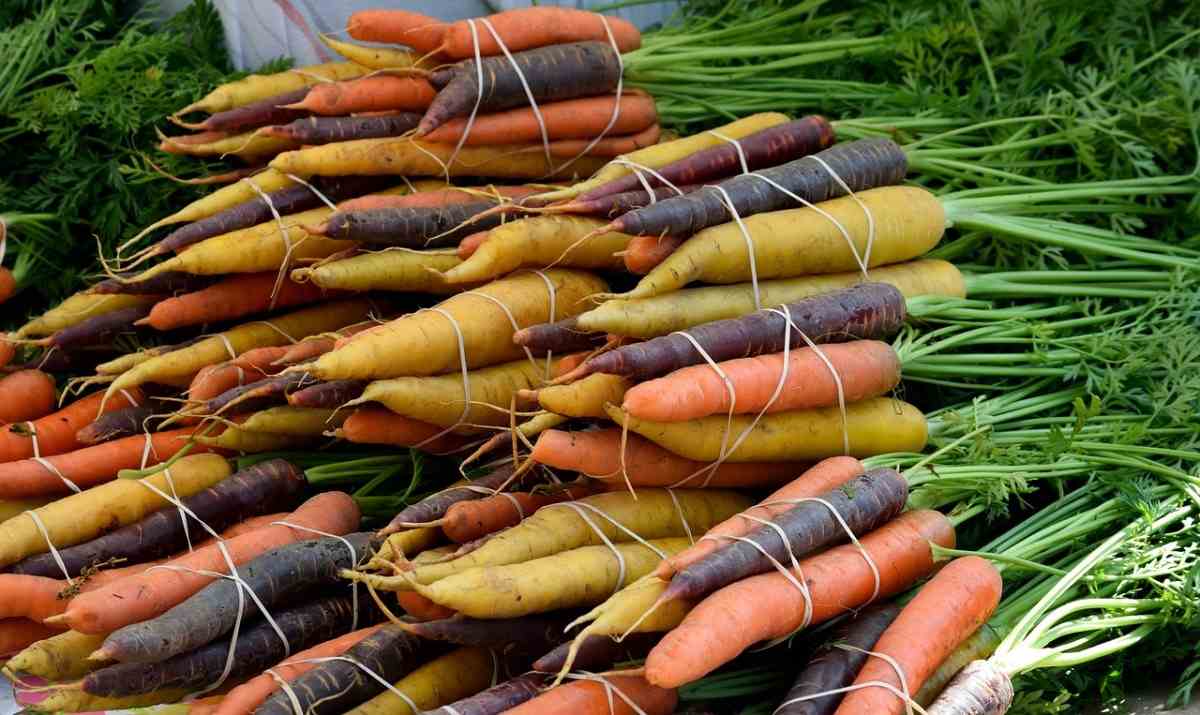
Heirloom Carrot Varieties are;
‘Chantenay’ Carrot, ‘True Danvers’ Carrot, ‘Saint Valery’ Carrot, ‘Long Orange’ Carrot, ‘Early Horn’ Carrot, ‘Purple’ Carrot, and ‘White Belgian’ Carrot.
12. Radish
Growing heirloom radishes have a better flavor that countless generations have eaten for their health.
The best heirloom radishes consider these long-time favorites;
- Spanish black radish
- French breakfast radish
- Watermelon radish
- Icicle radish, or white icicle
- German giant radish
- China rose radish
- Early scarlet globe, or scarlet globe radish
Commonly Asked Questions about Growing Heirloom Vegetables
Are heirloom vegetables more nutritious?
Firstly, heirlooms are known to produce better taste, more nutritious, and flavorful.
How do you grow heirloom vegetables?
Select the healthiest and tastiest plants to save seed from before harvesting the entire crop.
What is the most disease-resistant heirloom tomato?
The most popular heirloom tomato is the Cherokee Purple. It is a unique bush-style plant that is an indeterminate tomato. People growing Cherokee Purple tomato due to its disease resistance and ability to handle dry spells well.
Will heirloom seeds reproduce?
Heirloom vegetable plants reproduce seeds that can be saved and aware that because of open pollination, heirlooms you intend to save seeds from should not be planted near other plants due to the risk of cross-pollination.
